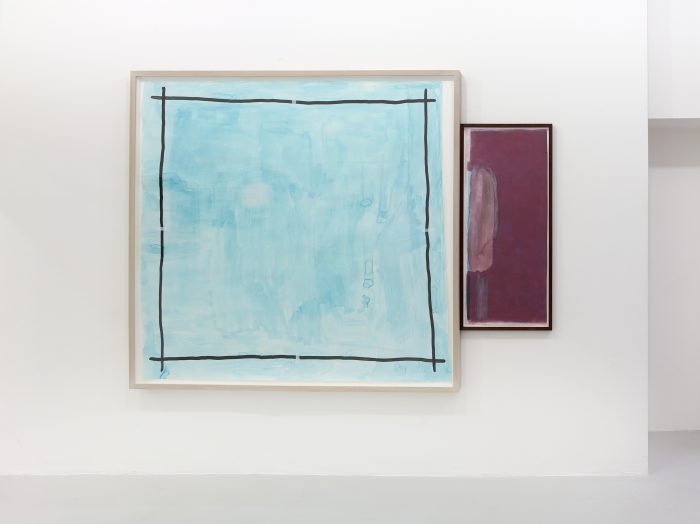
In Monique Mouton’s studio, her paintings on paper—large sheets with curled edges cut from a giant roll hanging above the doorway— fill her Gowanus space. The paintings are hung atop one another with pushpins, the shapes and lines from one work seeping into the next. Vast areas of rosewater wash and U-shapes curve from edge to edge without breaking the boundary of the frame. The paintings seem to be dealing with the expression of subtle relationships between material, hand and spirit.
“The thing I find interesting about art in general, painting specifically is that it’s such a direct and subjective action,” says the 33-year-old. “Even if you remove yourself from it, it’s still a mark of your intent or idea.” Her paintings have an air of tranquility; they’re carefully crafted and tended to. The detail in them isn’t so much descriptive as it is noticeable. They lull you into the deep poetics of the medium. In the studio I wrote quick descriptions of what I saw in the work: One painting is all green, another virtually entirely yellow with a black notch running midway through the right side. The brushstrokes are even and piled on one another. The density or transparency of the color is always somewhere between 20 and 80 percent—never empty or dark. As such, the paintings themselves could be interpreted as windows with diaphanous screens mediating the space between yourself and another world.

“It will show signs of my hands,” she says, “how I moved it around the space, where I painted, where I rubbed it in.” Having known Mouton’s work prior to her debut at Bridget Donahue Gallery in January of 2016—her first solo show in New York—I remember being surprised when she suddenly started painting on paper. It seemed like a huge departure, a symbolic and daring move, but now I see it as nothing other than a breakthrough. Up until that moment, Mouton had been painting on plywood cut-outs that hung on the wall or sometimes leaned, or lay on the floor, an attempt maybe to get away from formalist notions of the medium. The circles felt like mirrors, and the sticks seemed derived from nature, as with Agnes Martin’s allusion to “straightening the lines on a leaf.” With the paper, however, there is less virtuosity. Brushing pigment on to paper is the calmest thing you can do, the least taxing and the most expansive.
In the coming months Mouton will be in the studio, subtly shifting the shapes and feelings that appear in her work. As young artists we feel so alone before things get started, but once you have a successful show and a review from Roberta Smith in The New York Times, it can quickly become a race to finish paintings. Being able to pause so you can analyze the motion or reduction of a single gesture is the most vital part of being an artist, so it’s a pleasure when someone such as Mouton can make this both apparent and tangible through her work. A second solo show at Donahue’s is planned for next season.










 in your life?
in your life?

